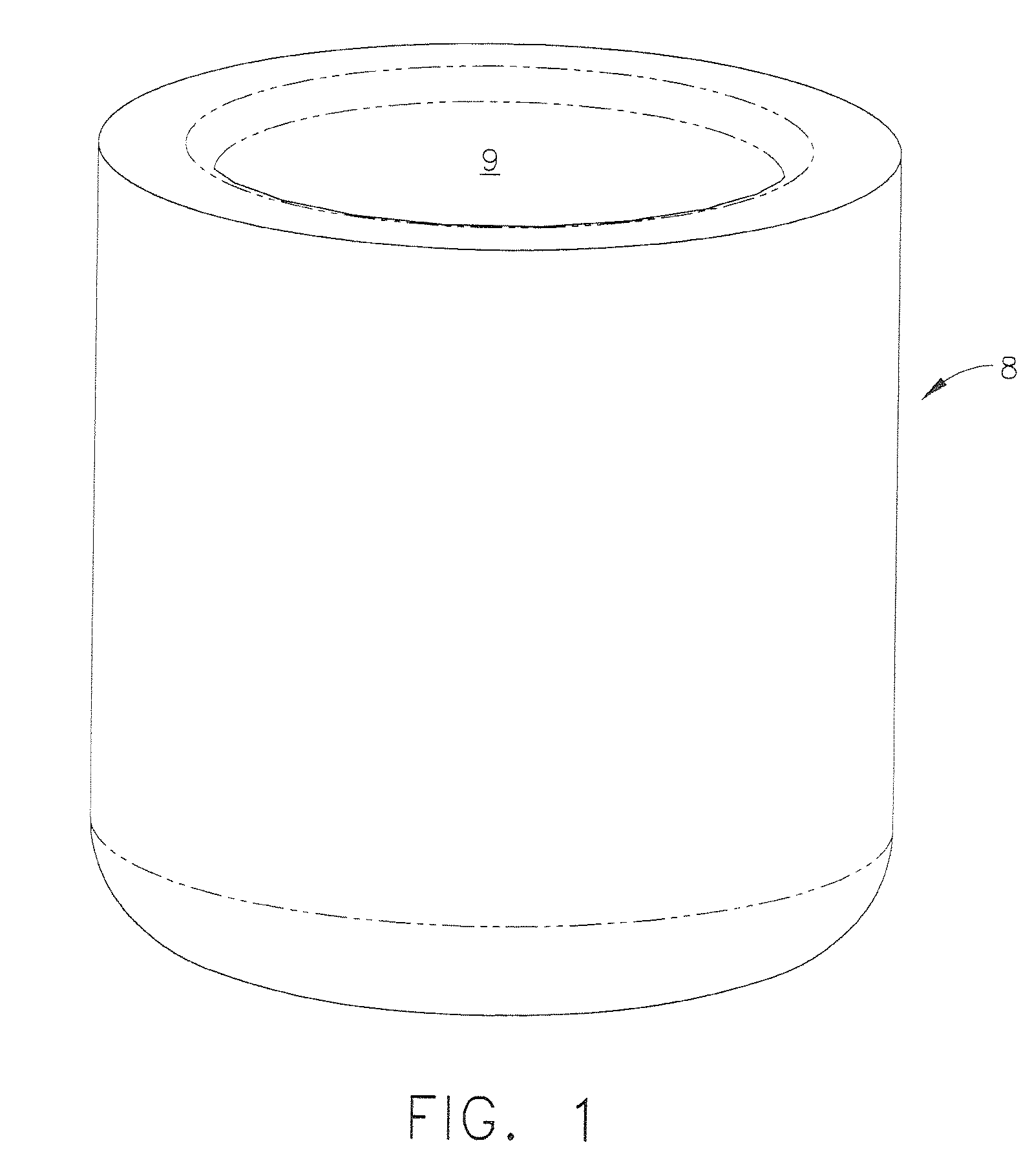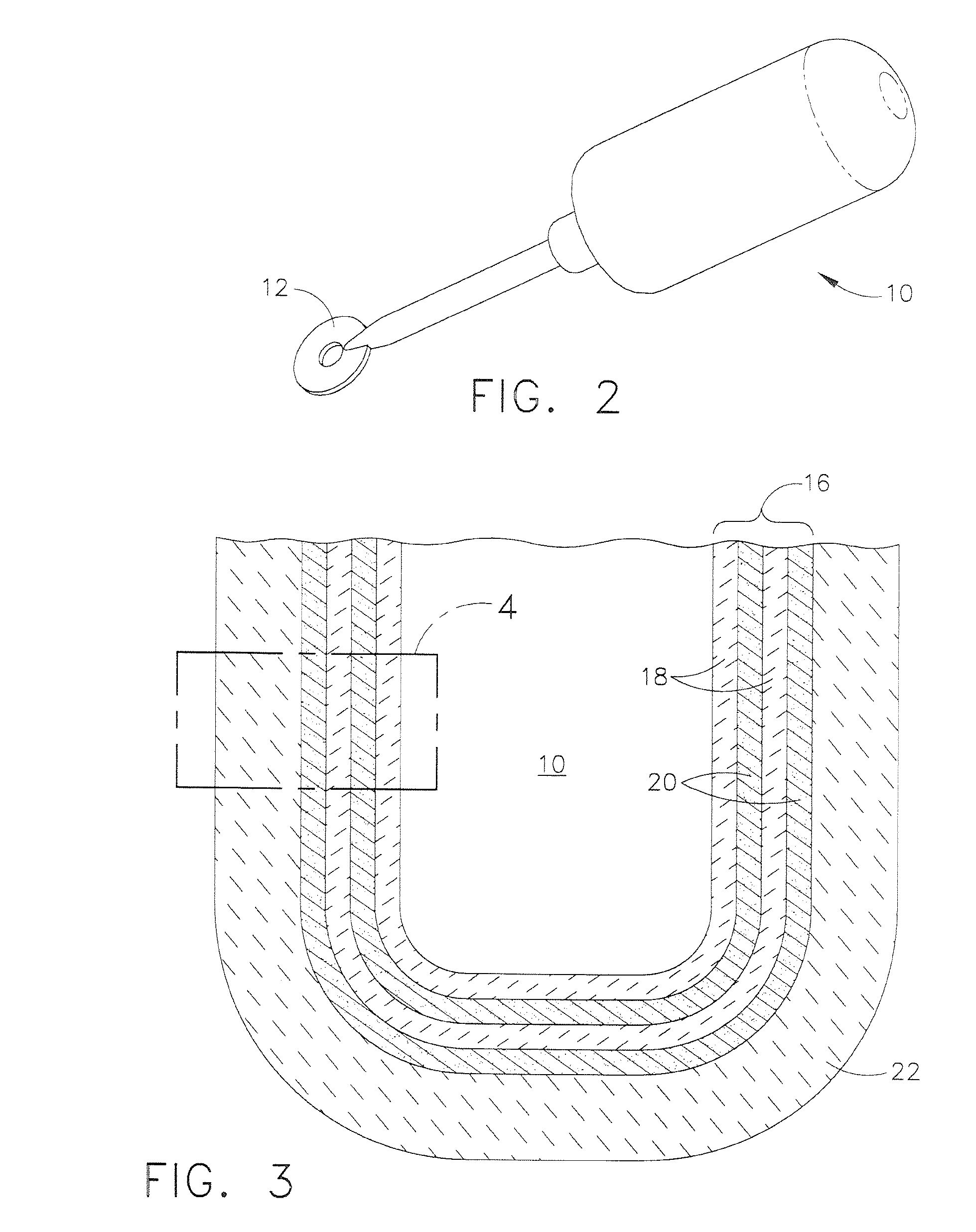Refractory crucibles capable of managing thermal stress and suitable for melting highly reactive alloys
a technology of crucibles and reactive alloys, applied in the direction of manufacturing converters, furniture, lighting and heating apparatus, etc., can solve the problems of crucible cracking, crucible life reduction, and inclusions in the component being cas
- Summary
- Abstract
- Description
- Claims
- Application Information
AI Technical Summary
Benefits of technology
Problems solved by technology
Method used
Image
Examples
Embodiment Construction
[0020]Embodiments described herein generally relate to refractory crucibles capable of managing the thermal stress generated during the casting of highly reactive titanium alloys. More specifically, embodiments described herein generally relate to refractory crucible capable of managing thermal stress and suitable for melting highly reactive alloys comprising a facecoat, a backing, and at least one retaining ring applied about at least a portion of the backing of the crucible, the retaining ring comprising a composition selected from the group consisting of conductive materials, non-conductive materials, and combinations thereof.
[0021]While embodiments herein will generally focus on crucibles suitable for melting TiAl for use in making near net shape airfoils, the description should not be limited to such. Those skilled in the art will understand that the present embodiments may be suitable for melting any titanium alloy for use in making any near net shape gas turbine component in ...
PUM
| Property | Measurement | Unit |
|---|---|---|
| thickness | aaaaa | aaaaa |
| width | aaaaa | aaaaa |
| width | aaaaa | aaaaa |
Abstract
Description
Claims
Application Information
 Login to View More
Login to View More - R&D
- Intellectual Property
- Life Sciences
- Materials
- Tech Scout
- Unparalleled Data Quality
- Higher Quality Content
- 60% Fewer Hallucinations
Browse by: Latest US Patents, China's latest patents, Technical Efficacy Thesaurus, Application Domain, Technology Topic, Popular Technical Reports.
© 2025 PatSnap. All rights reserved.Legal|Privacy policy|Modern Slavery Act Transparency Statement|Sitemap|About US| Contact US: help@patsnap.com



